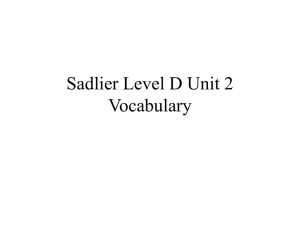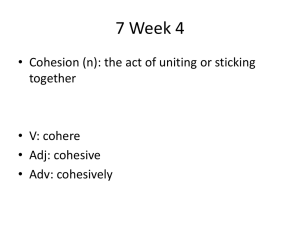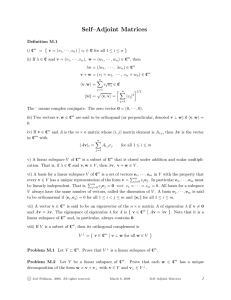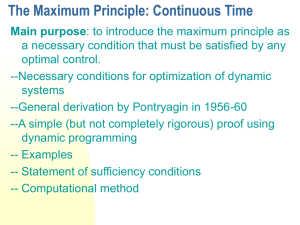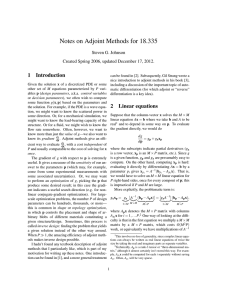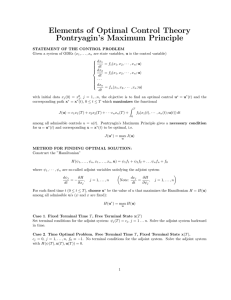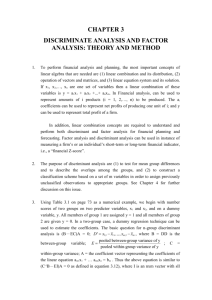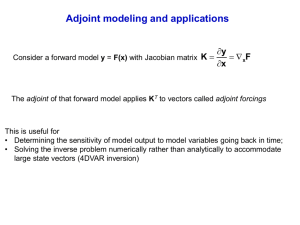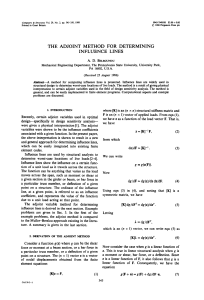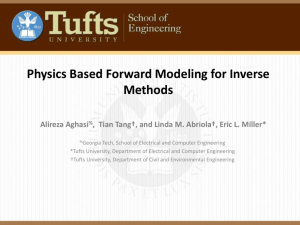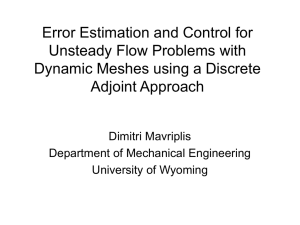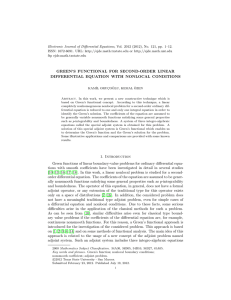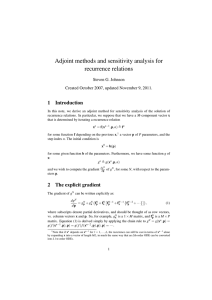Multi degrees of freedom system
advertisement
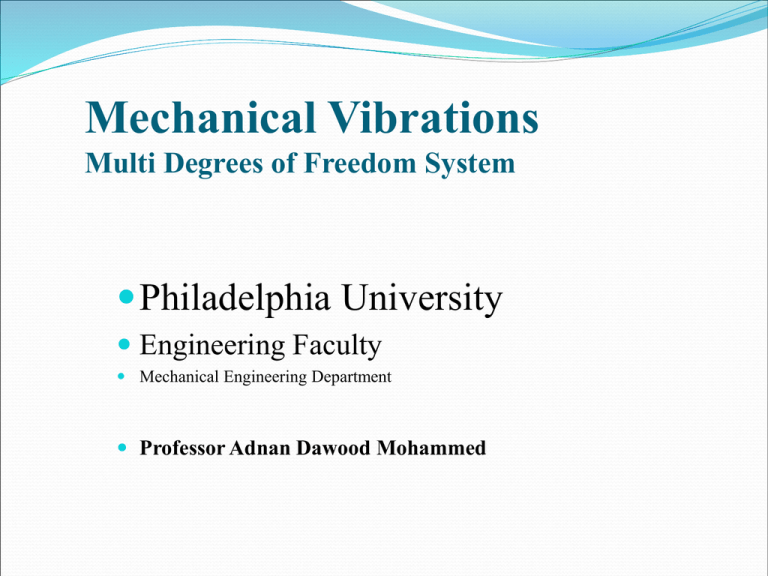
Mechanical Vibrations
Multi Degrees of Freedom System
Philadelphia University
Engineering Faculty
Mechanical Engineering Department
Professor Adnan Dawood Mohammed
Multi DOF system
Multi-DOF systems are so similar to two-DOF.
Equations of motion:
M x C x K x F
They are obtained using:
1)
2)
3)
[M] is the Mass matrix
[K] is the Stiffness matrix
[C] is the Damping matrix
Vector mechanics (Newton or D’ Alembert)
Hamilton's principles
Lagrange's equations
Un-damped Free Vibration: the eigenvalue problem
Equation of motion:
M q K q 0
in terms of the generalized D.O.F. qi
Write the matrix equation as:
Kq 0,
Mq
(1)
where M and K are the Mass and Stiffness matrices respectively.
and q are the acceleration and displaceme nt vectors respectively.
q
premultipl y equation (1) by M
-1
M KA
-1
-1
. Note that M M I (unit matrix)
the system matrix. Equation 1 becomes :
Aq 0
Iq
(2)
Assuming harmonic motion:
q q, where 2 , Equation (2) becomes
A - I{q} 0
(3)
The characters tic equation of the system is the determinan t
equated to ZERO, or
A - I 0,
(4) , the roots i of the
characters tic equation are called the eigenvalues and the natural
frequencie s of the system are determined from them by the relation
i i2
(5)
By substituti ng i into the matrix equation (3), we obtain the correspond ing
mode shape X i which is called the eigenvector.
It is also possible to find the eigenvecto rs from the adjoint matrix
of the system. Let B A - I, and start with the definition of the
inverse
B-1
adjB
. Premultipl y by B B to obtain,
B
B I B adj B, or
A - I I A - IadjA - I
(6)
If now we let i , an eigenvalue , then the determinan t on the
left side of the equation is zero,
0 A - i IadjA - i I
The above equation is valied for all values i and represents " n"
equations for the n - degrees of freedom system. Comparing
this equation w ith equation (4) for the i th mode
A - i I{q}i 0
, we recognize that the adjoint matrix adjA - i I
must consists of columns, each of which is the eigenvecto r q i
(multiplie d by an arbitraray constant)
Example:
Consider the multi-story building shown in figure. The
Equations of motion can be written as:
0
Pre-multiply by the inverse of mass matrix
0
1 / 2m
1 / m
0
(3k / 2m)
M 1 K A
( k / m)
M 1
( k / 2 m)
(k / m)
By letting 2 , equation (a) becomes
(3k / 2m)
( k / m)
(k / 2m) x1 0
(k / m) x2 0
(b)
The characteristic equation from the determinant of the above matrix is
2
5 k
k
2
0,
2 m
m
1 k
k
1
2 2
2m
m
(c), from which
(d)
The eigenvectors can be found from Eqn.(b) by substituting the above values of
. The adjoint matrix from Eqn. (b) is
(k / m) i
AdjA I
(k / m)
(3k / 2m) i
(k / 2m)
Substituting 1 into Eqn. (e) we obtain:
0.5
1.0
0.5 k
1.0 m
Here each column is already normalized to unity and the first eigenvector is
0.5
X1
1.0
Similarly when 2 0.5k/m) the adjoint matrix gives;
1.0
1.0
0.5 k
0.5 m
Normalizing to Unity;
1.0
1.0
1.0 k
1.0 m
The second eigenvector from either column is;
1 .0
X
2 1.0


